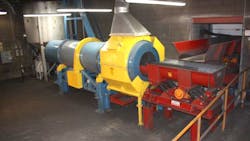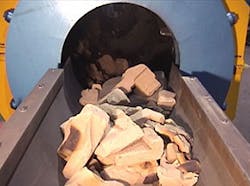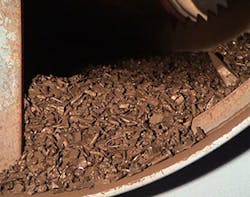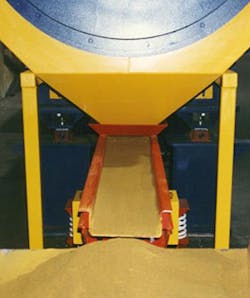Reclaiming Sand, Metal is a Strategy for Reclaiming Costs
In the past, many no-bake foundries would make the casting process their primary focus, so the inevitable, left-over sand lumps were dumped somewhere, possibly on an adjacent or nearby site, or hauled away to an approved landfill site.
But, now, being a successful requires a wider focus, in particular a close management of operating costs and profit margins. These operations are constantly looking for ways to reduce their overall operating costs. When sales are down, cost-saving projects draw even more attention, because it’s then that these foundries have the available time and incentive to incorporate new equipment. Generally, the projects that get approved first are the ones with the fastest payback.
The foundries that dump spent sand mixed with tramp metal behind their plants must realize that, someday in the future, they will have to address this situation and clean up the site. But, that black cloud hanging over some foundries has become a revenue stream for others. It’s very rewarding for all involved when you turn a perceived negative into something positive. When you can clean up the environment around your foundry and make money doing it, everyone benefits.
What some metalcasters have realized is that over the years a lot of valuable metal has been dumped along with the sand. The operators especially know this, but they do not have the equipment or time to recover the metal effectively.
Didion International, Inc, well known for sand reclamation and for separating sand from metal, have developed a system to help foundries recover the sand and metal that was previously disposed on the foundry site. Both ferrous and nonferrous foundries have reported excellent savings with the Didion system in operation.
Because the equipment can run outside the plant, foundry floor space is saved. The process is very efficient and the savings easily covers the low energy requirements. A variable jet burner with a 10:1 turndown ratio dries the sand and metallics. The sand is scrubbed and screened twice prior to discharge. The patented, dual-chambered design makes it possible for the screen-overs to recirculate, to optimize the yield up to 97%. The metal is separated from the sand and is thoroughly cleaned before discharging out the opposite end.
For foundries that currently ship their spent sand to approved landfill sites, the costs of disposal and new sand purchases can easily justify an in-house Sand Reclamation System.
In most cases if a foundry generates two tons/hour of disposal sand, then sand reclamation should be investigated.
For foundries that currently ship their spent sand to approved landfill sites, the costs of disposal and new sand purchases can easily justify investing in an in-house sand-reclamation system. In most cases if a foundry generates two tons/hour of disposal sand, then sand reclamation should be investigated.
For foundries generating five tons/hour of disposal sand, sand reclamation should be considered as a viable cost-saving project. And, for operations generating 10 tons/hour or more disposal sand, the savings or payback may be expected in less than one year.
Mark Didion is the product manager for Didon International. Contact him at [email protected], or visit www.didion.com



